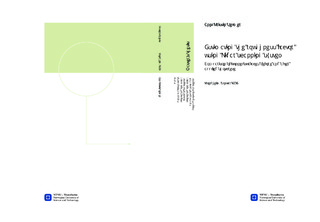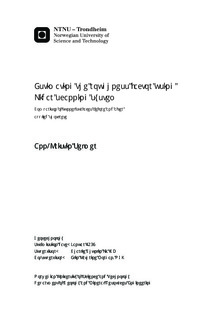| dc.contributor.advisor | Li, Charlie Chunlin | nb_NO |
| dc.contributor.advisor | Morgan, Elin Kathrine | nb_NO |
| dc.contributor.author | Selmer, Ann-Kristin | nb_NO |
| dc.date.accessioned | 2014-12-19T11:56:45Z | |
| dc.date.available | 2014-12-19T11:56:45Z | |
| dc.date.created | 2014-04-11 | nb_NO |
| dc.date.issued | 2014 | nb_NO |
| dc.identifier | 711982 | nb_NO |
| dc.identifier | ntnudaim:10433 | nb_NO |
| dc.identifier.uri | http://hdl.handle.net/11250/236260 | |
| dc.description.abstract | This thesis gives a suggestion of a method for extracting the roughness factor for estimating the sprayed concrete volume in tunnel applications. The determination of the roughness factor today is based on experience and is usually done by guessing or based on the roughness factor used in the previous blasted round. This study includes creating a look-up-chart which could enable the contractor and engineer to have a better foundation and documentation on why the roughness factor is chosen as it is. This is performed by using LiDAR scanning system and using the LiDAR data from the rock mass surface from a water cavern close to Lillestrøm in Norway.A comparison of the LiDAR data and the hand mapped data is performed, regarding special features in the rock mass, such as geometry, major structures and weakness zones. The LiDAR data display the true surface of the rock mass and visualizing geometry is possible with the LiDAR model. Measurements of the generated profiles in the cavern have been performed on selected areas extracting roughness factor between the rock mass surface and the sprayed concrete surface. Calculating the roughness factor using profile length is a cumbersome method to use due to the holes in the data. It is recommended that the Lidar model is as watertight as possible and this requires more precise processing of the data. The calculated average roughness factors have been correlated to the corresponding Q-value, the RQD/J_n-quotient, RQD and the joint set number J_n. From the results of the correlation it is suggested to use the Q-value and the joint set number J_n as a basis for the look-up-chart. Generally the results indicate that the roughness factor increases with decreasing Q-value. In addition it could be seen that the roughness factor value increased with approximately 0,2 for every increasing value of the joint set number. It must be emphasized that this is a suggestion based on only one test site. The method used to find the roughness factor is recommended evaluated. It may be possible that large scale roughness requires a larger roughness factor to meet the requirement of minimum sprayed concrete thickness. Further studies are necessary. | nb_NO |
| dc.language | eng | nb_NO |
| dc.publisher | Institutt for geologi og bergteknikk | nb_NO |
| dc.title | Estimating the roughness factor using Lidar scanning system: Comparison of tunnel surfaces before and after applied shotcrete | nb_NO |
| dc.type | Master thesis | nb_NO |
| dc.source.pagenumber | 87 | nb_NO |
| dc.contributor.department | Norges teknisk-naturvitenskapelige universitet, Fakultet for ingeniørvitenskap og teknologi, Institutt for geologi og bergteknikk | nb_NO |

